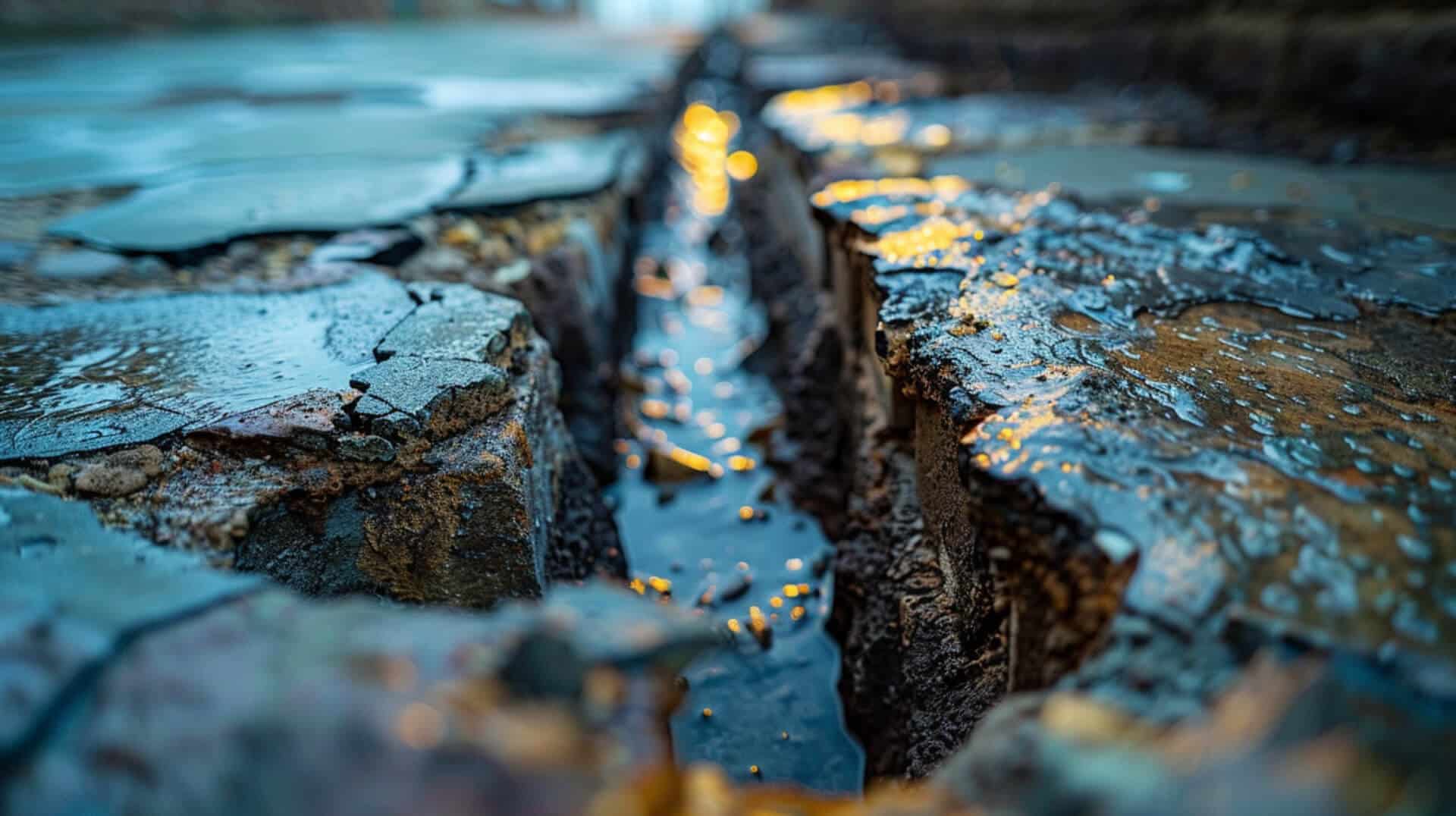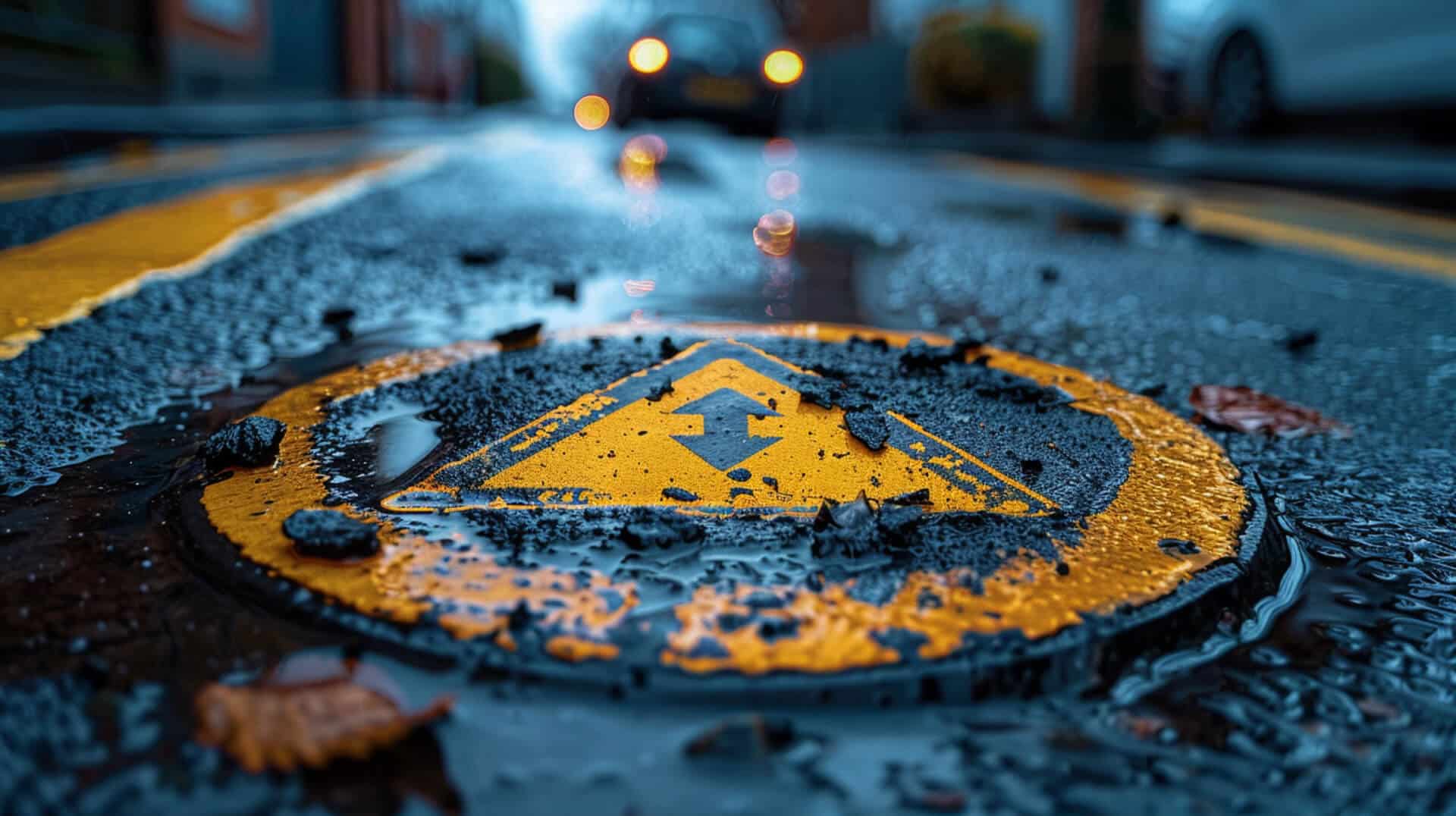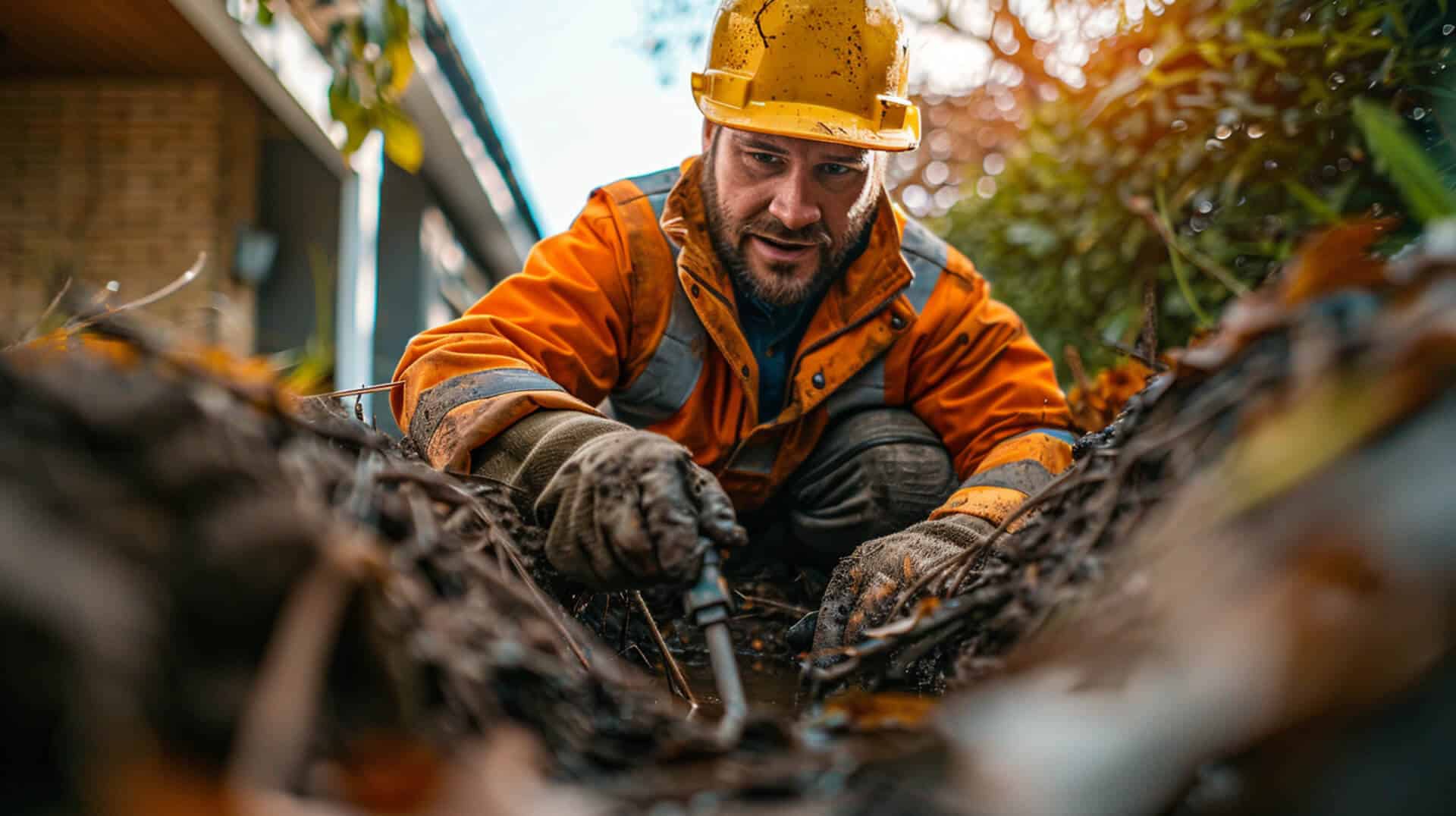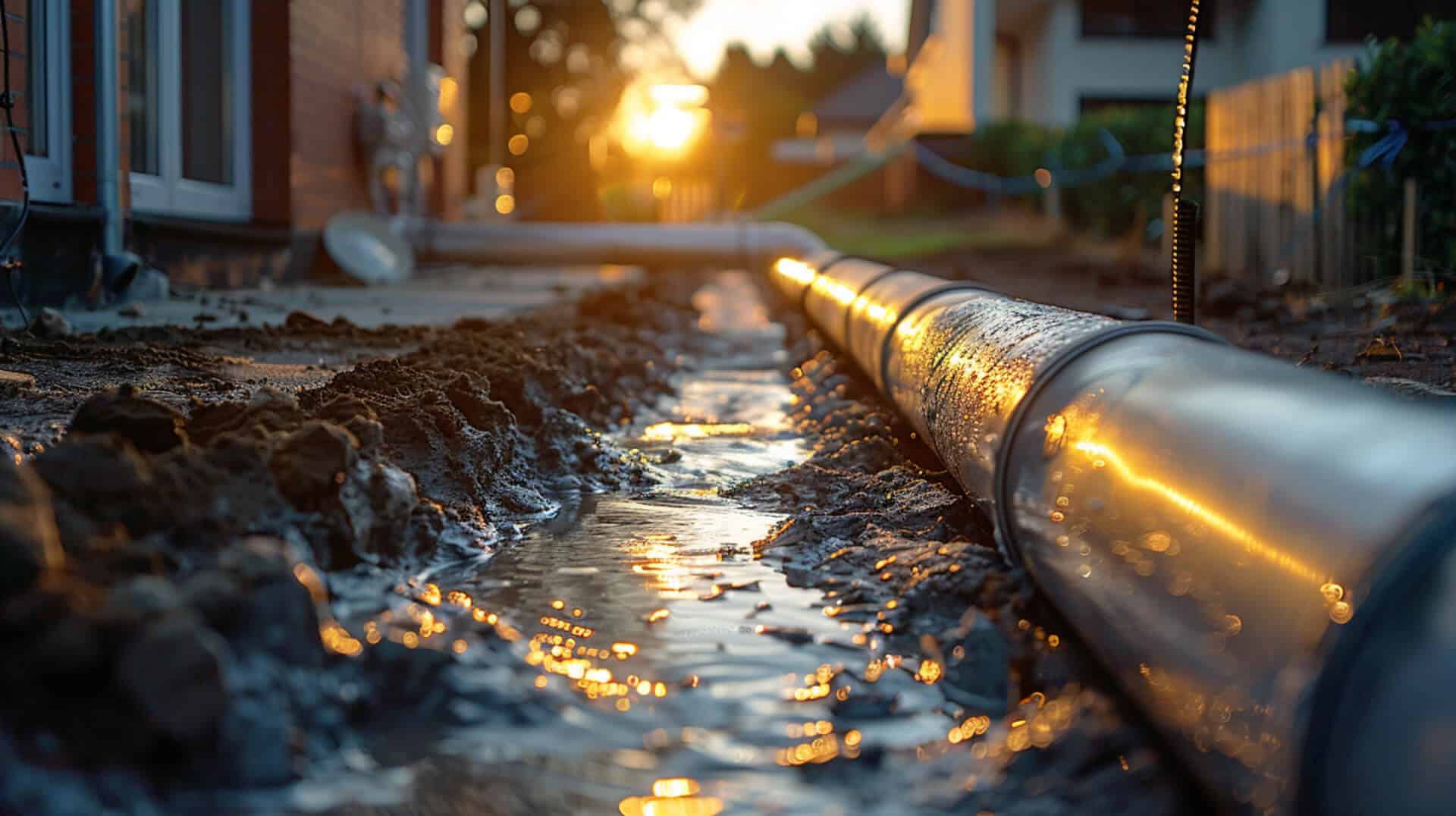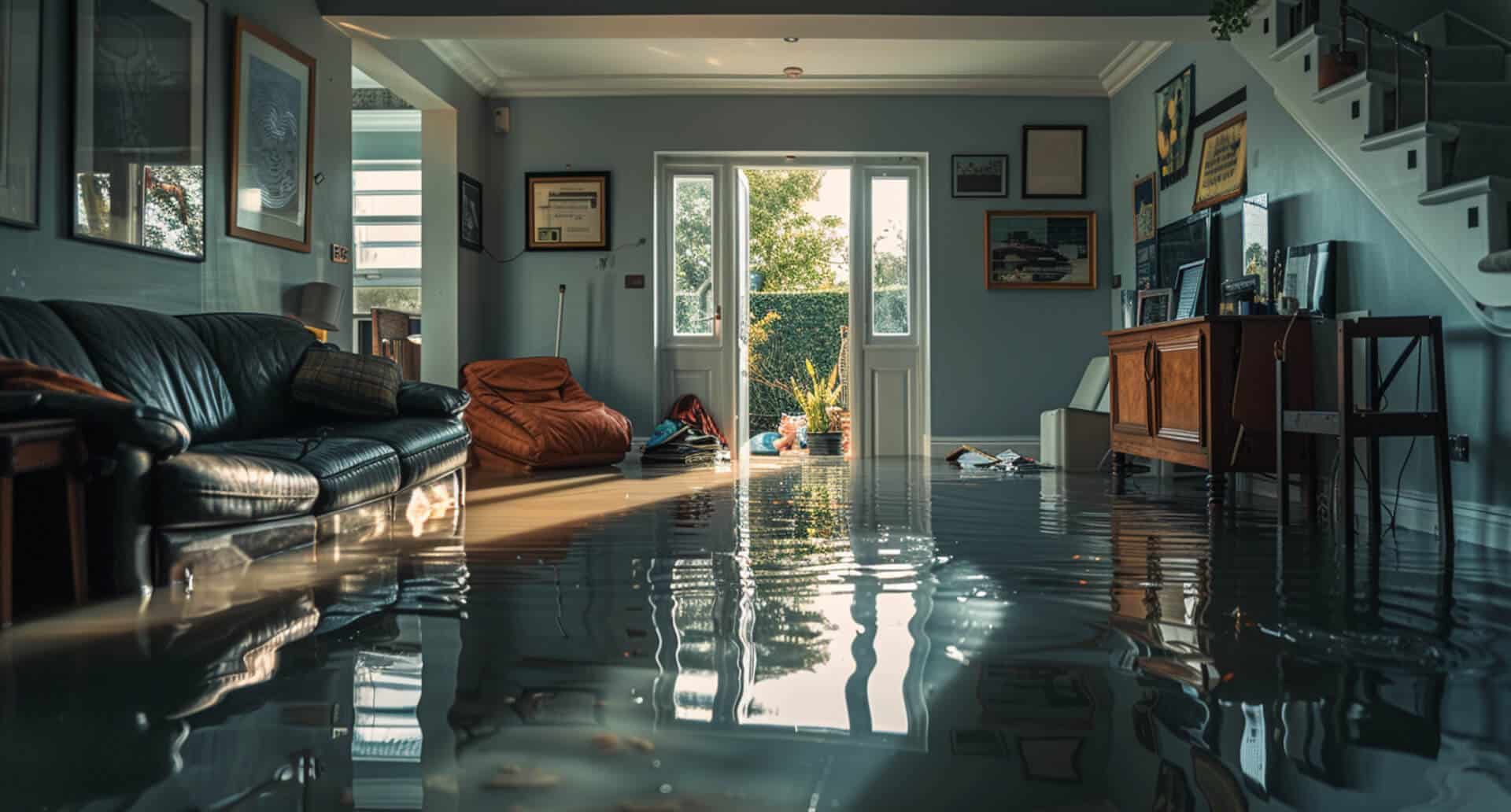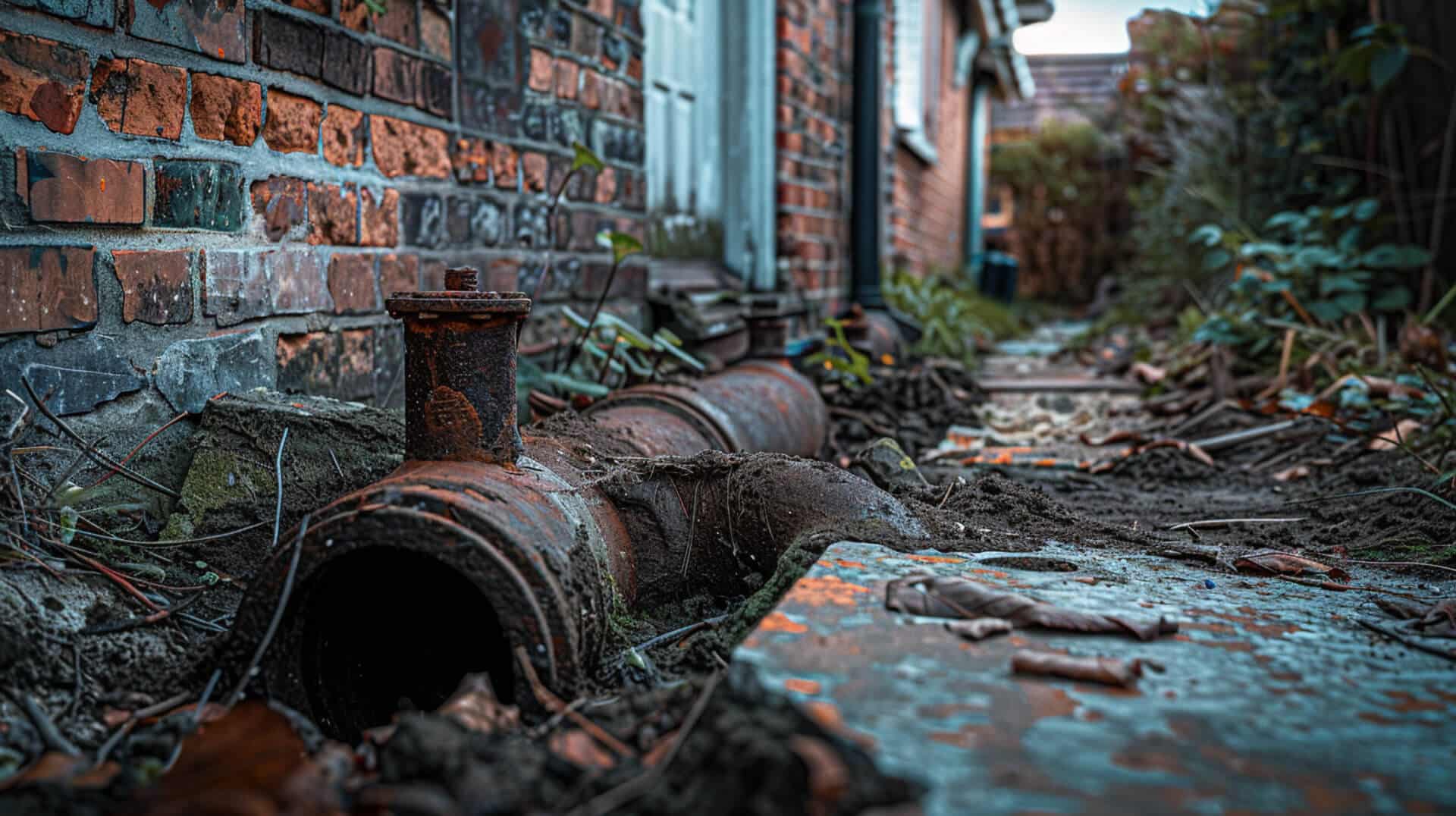 What Causes A Drain To Collapse
What Causes A Drain To Collapse
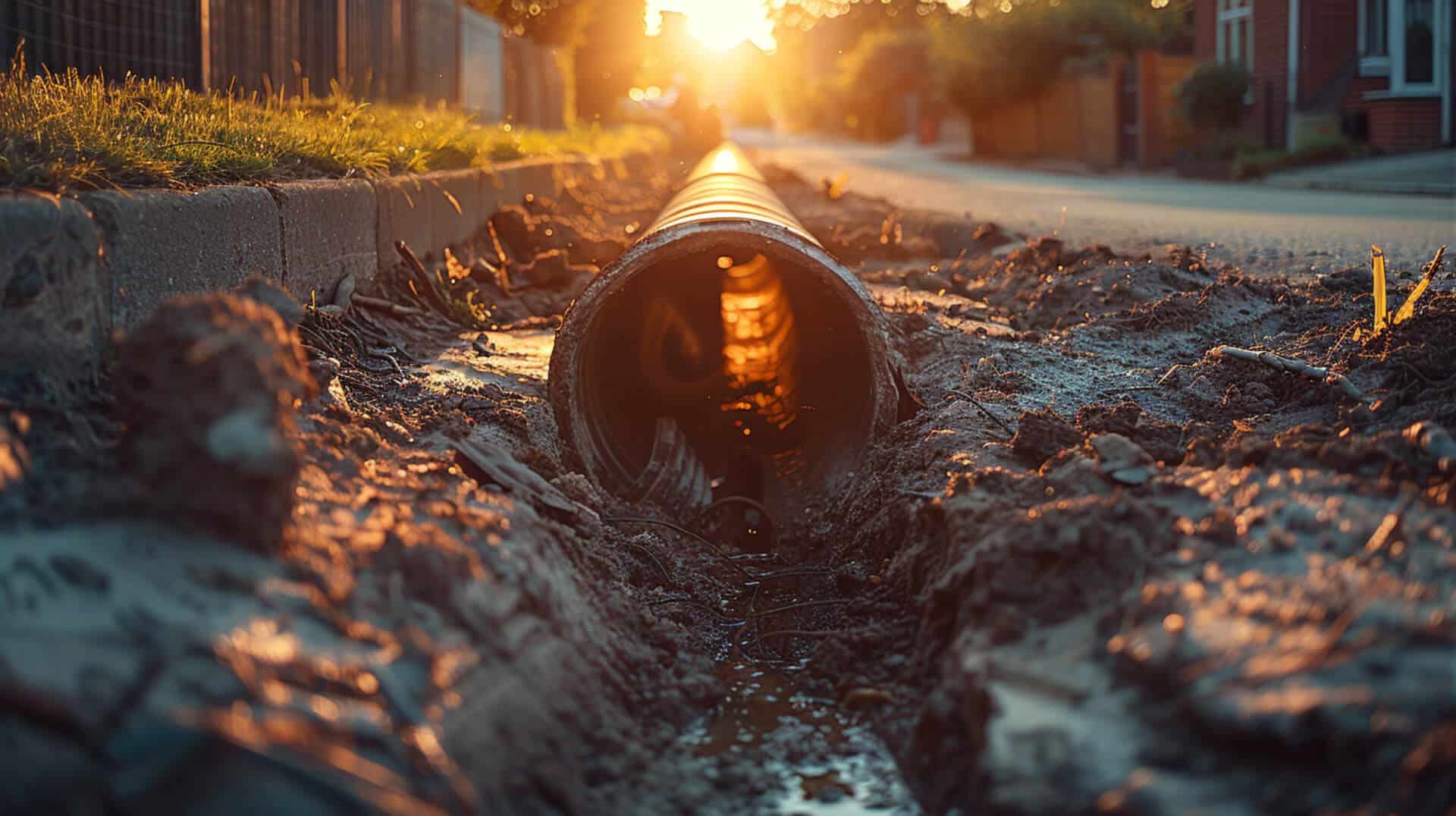
A typical drainage system is a network designed to manage water and waste, consisting of pipes, drains, and channels. These components work in tandem to direct the flow of wastewater away from residential and commercial properties, ensuring sanitation and preventing water accumulation that could lead to structural damage.
The Importance of Recognising Drain Collapse Causes
For property management, understanding the causes of drain collapse is essential. It enables proactive maintenance and timely interventions, which can prevent costly repairs and property damage. Recognising the early signs of potential issues allows for swift action to mitigate risks associated with drainage system failures.
Drainage Systems and Environmental Stressors
Drainage systems are subject to various environmental stressors, such as extreme weather conditions, invasive tree roots, and ground movement. Different types of systems, whether combined sewers or separate storm drains, respond uniquely to these stressors. The material of the pipes, the installation quality, and the surrounding landscape all play roles in a system’s resilience.
Common Sites for Drain Collapses
Drain collapses often occur at points where the system is most vulnerablejoints, bends, and areas where heavy traffic or construction activities apply additional pressure. These areas are prone to damage from external forces or internal blockages, leading to potential collapses that can disrupt the entire drainage network.
The Role of Invasive Tree Roots in Drain Collapse
Understanding how invasive tree roots contribute to drain collapses is essential for maintaining a robust drainage system. Tree roots naturally seek moisture and can infiltrate drainage pipes in search of it. This section explores the interaction between tree roots and drainage infrastructure.
Pathways of Root Invasion
Tree roots may enter drainage systems through pre-existing vulnerabilities such as cracks, loose joints, or openings in the pipes. These entry points are often found in older systems where materials have deteriorated over time.
Vulnerability Factors
Drainage systems become susceptible to root invasion due to several conditions:
– Material Degradation: Over time, pipes can corrode or break down, creating entry points for roots.
– Moisture Presence: Pipes with leaks or condensation are more likely to attract roots.
– Pipe Material: Certain materials, like clay or concrete, are more prone to root intrusion compared to PVC.
Physical Impact of Roots on Pipes
Once inside, roots can grow and expand, exerting pressure on the pipe walls. This can lead to:
– Blockages: Accumulation of roots restricts water flow.
– Structural Damage: Continued growth can crack or displace sections of the pipe.
Importance of Landscaping Considerations
Proper landscaping and plant selection near drainage lines can mitigate the risk of root intrusion. It is advisable to choose species with less aggressive root systems and to plant them at a safe distance from the drainage infrastructure.
By understanding these factors, you can take proactive steps to protect your property’s drainage system from the costly and disruptive effects of root-induced damage.
Temperature-Induced Ground Movement and Its Impact on Drainage Systems
Temperature fluctuations can significantly impact the integrity of drainage systems. This section examines the effects of thermal ground movement and its role in drain collapse.
Effects of Freezing and Thawing Cycles
Drainage systems are subject to the forces of nature, with freezing and thawing cycles posing a particular threat. These cycles cause ground movement, which can exert pressure on pipes, leading to potential failure.
- Expansion and Contraction: As temperatures drop, the ground contracts and can freeze, causing pipes to become rigid and brittle. Upon thawing, the ground expands, which can lead to pipe displacement or cracking.
- Water Infiltration: Melting snow and ice can saturate the soil, increasing the hydrostatic pressure on drainage systems.
Susceptibility of Materials to Temperature Changes
Different materials react differently to temperature-induced stress:
– Metal Pipes: Prone to corrosion and cracking under freeze-thaw conditions.
– Plastic Pipes: While more resistant to temperature changes, they can become misshapen under extreme conditions.
Pronounced Temperature Effects in Drainage Systems
Areas of a drainage system most affected by temperature changes include:
– Shallow Pipes: More exposed to surface temperature variations.
– Junction Points: Where pipes connect, they are more vulnerable to movement and stress.
By understanding these dynamics, you can better anticipate potential issues and take measures to protect your drainage system from the adverse effects of temperature-induced ground movement.
The Consequences of Improper Drainage Installation
Proper installation is critical to the functionality and longevity of drainage systems. Mistakes during installation can lead to significant issues, including the risk of collapse.
Common Installation Errors
During the installation of drainage systems, several common errors can occur:
– Incorrect Slope: Drainage pipes require a precise gradient to ensure proper water flow. An incorrect slope can lead to water stagnation and increased pressure on the pipes.
– Inadequate Bedding: Pipes need a stable base to prevent shifting. Without proper bedding, pipes are susceptible to movement and damage.
– Poor Joint Sealing: Improperly sealed joints can allow root intrusion and soil ingress, compromising pipe integrity.
Risks Posed by Improper Installation
Improper installation can directly contribute to drainage system failure:
– Increased Blockages: Incorrectly installed pipes can lead to frequent blockages, requiring more maintenance and repairs.
– Structural Vulnerability: Systems installed without adherence to standards may collapse under environmental stressors.
The Importance of Professional Installation
Professional installation ensures that:
– Standards Are Met: Professionals follow industry standards and local regulations, reducing the risk of future problems.
– Expertise Is Applied: Experienced installers can anticipate and mitigate potential issues during installation.
Resources for Proper Installation Practices
Property owners can find resources on proper drainage installation through:
– Local Building Authorities: They provide guidelines and codes for drainage installation.
– Professional Associations: Organisations like the National Association of Drainage Contractors offer resources and advice.
By ensuring proper installation practices, you can significantly reduce the risk of drainage system collapse and extend the lifespan of your infrastructure.
Identifying Early Warning Signs of Drain Collapse
Recognising the early indicators of a potential drain collapse is crucial for property managers and owners. Timely identification and intervention can prevent extensive damage and costly repairs.
Common Symptoms of Drainage Issues
Several signs may suggest a drainage system is at risk of collapse:
- Persistent Slow Drainage: If water consistently drains more slowly than usual, it could indicate a blockage or structural problem within the pipes.
- Unusual Noises: Gurgling sounds from toilets or drains can be a sign of trapped air due to a blockage or system compromise.
- Foul Odours: The presence of sewage smells near drains or in the yard can signal a break or obstruction in the sewer line.
- Damp Patches or Sinkholes: Wet areas in the garden or unexplained sinkholes may point to a leaking or collapsed drain.
Proactive Monitoring Strategies
Property managers can adopt several strategies to monitor for these signs:
- Regular Inspections: Schedule routine checks of the drainage system, especially after heavy rainfall or freeze-thaw cycles.
- CCTV Surveys: Utilise CCTV drain surveys to visually inspect the inside of drainage pipes for any irregularities.
The Importance of Timely Action
Addressing these warning signs promptly can prevent further deterioration of the drainage system. Ignoring them can lead to more severe issues, such as extensive water damage to the property or even health hazards from sewage exposure.
Focus Areas for Inspection
When inspecting drainage systems, pay particular attention to:
- Low-Lying Areas: These are more likely to collect water and show signs of drainage failure.
- Older Sections of Piping: Older pipes are more prone to wear and tear and may show early signs of collapse.
By staying vigilant and responding to these early warning signs, you can maintain the integrity of your property’s drainage system and avoid the disruptions caused by drain collapse.
Diagnostic Tools for Assessing Drain Health
To ensure the health of your drainage system, various diagnostic technologies are employed by professionals to identify and assess issues within the pipes.
CCTV Drain Surveys
CCTV drain surveys are a cornerstone in diagnosing drain health. They involve:
- Inserting a Camera: A high-resolution camera is inserted into the drain.
- Real-Time Feedback: It provides real-time visual feedback of the drain’s condition.
- Identifying Issues: This method is effective in spotting blockages, structural damage, and root intrusion.
The Value of Sonar Tracing
Sonar tracing complements CCTV surveys, especially when:
- Pipes Are Filled: It is useful when pipes are full of water or silt, where cameras cannot see.
- Assessing Pipe Integrity: Sonar waves help in assessing the integrity of the pipe walls.
- Locating Deep Issues: It is beneficial for locating collapses or obstructions in deep or inaccessible parts of the system.
Sourcing Diagnostic Services
When seeking diagnostic services, property managers should consider:
- Provider Expertise: Look for providers with a proven track record and expertise.
- Technology Used: Ensure they use the latest technology for accurate diagnostics.
- Service Scope: Choose services that offer comprehensive diagnostics and actionable insights.
By utilising these advanced diagnostic tools, you can gain a clear understanding of your drainage system’s condition and take informed steps towards maintenance or repair.
Professional Repair Options for Collapsed Drains
When a drainage system fails, property owners face the critical task of choosing the most effective repair method. The decision between relining and replacement, among other options, hinges on several factors.
Deciding on Repair Methods
Professionals assess the condition of the collapsed drain to determine the appropriate repair strategy:
- Extent of Damage: Minor cracks may be suitable for relining, while severe collapses often require complete replacement.
- Pipe Material: The type of material may affect the repair method, with some materials being more amenable to certain techniques.
- Location and Accessibility: The ease of access to the affected area can influence the choice of repair method.
The Advantages of Professional Intervention
Seeking professional help for drain repairs offers several benefits:
- Expertise: Professionals bring experience and specialised knowledge to the table, ensuring repairs are done correctly.
- Equipment: They have access to the necessary tools and technology to diagnose and repair effectively.
- Safety: Professionals are trained to handle repairs safely, mitigating risks associated with DIY attempts.
Finding Reputable Repair Services
To locate reputable repair services specialising in drainage systems, consider the following resources:
- Trade Associations: Organisations like the National Association of Drainage Contractors provide directories of certified professionals.
- Local Recommendations: Referrals from local authorities or community members can guide you to trusted service providers.
- Online Reviews: Researching online reviews and testimonials can offer insights into the reliability and quality of potential repair services.
By carefully selecting a professional repair service, you ensure that your drainage system is restored to optimal function with minimal disruption and risk.
Preventive Measures to Protect Drainage Systems
Proactive maintenance is key to preventing drain collapse. Regularly scheduled tasks can significantly extend the life of your drainage system and help avoid costly repairs.
Routine Maintenance Tasks
To safeguard against drainage failure, consider the following routine tasks:
- Regular Inspections: Periodically check for signs of damage or blockage.
- Cleaning: Remove debris and buildup to ensure unobstructed water flow.
- Monitoring: Keep an eye on water drainage speeds and odours, which can indicate potential issues.
Installation of Root Barriers
Root barriers are a preventive measure against tree root invasion:
- Placement: Instal barriers around pipes to deter root growth towards them.
- Material: Choose durable materials designed to withstand root pressure.
- Depth: Ensure barriers are deep enough to protect against the most aggressive roots.
Importance of Regular Inspection and Cleaning
Consistent inspection and cleaning are vital for:
- Early Detection: Spotting issues before they escalate into major problems.
- System Longevity: Maintaining the structural integrity of the pipes.
- Cost Savings: Reducing the need for emergency repairs or complete system overhauls.
Resources for Effective Maintenance Practices
Property managers can enhance their knowledge of maintenance practices through:
- Professional Workshops: Attend sessions hosted by industry experts.
- Online Courses: Enrol in courses focused on drainage system care.
- Trade Publications: Stay updated with the latest best practices and recommendations.
By implementing these preventive measures, you can ensure the health and efficiency of your drainage system, thereby protecting your property from the disruptions caused by drain collapse.
Understanding the Financial Implications of Drain Collapse
When a drainage system fails, the financial implications can be significant. Property owners should be aware of the potential costs and the role of insurance in mitigating these expenses.
Typical Costs of Repairing a Collapsed Drain
Repairing a collapsed drain can incur various expenses, including:
- Diagnostic Services: Costs for CCTV surveys or sonar tracing to assess the damage.
- Repair Methods: Expenses related to excavation, pipe relining, or complete replacement.
- Labour: Charges for professional plumbers and technicians.
Role of Insurance in Drainage Failures
Insurance policies may cover some of the costs associated with drain repairs:
- Accidental Damage: Many policies include coverage for accidental damage to pipes.
- Assessing Coverage: It’s crucial to review your policy to understand what is and isn’t covered.
Importance of Insurance Policy Review
Understanding the details of your property insurance ensures:
- Adequate Coverage: Confirming that your policy covers the types of damage your property may incur.
- Financial Planning: Being aware of potential out-of-pocket expenses if certain damages are not covered.
Seeking Financial Assistance for Major Repairs
In the event of substantial repair costs, property owners can explore options for financial assistance:
- Government Programmes: Some regions offer assistance for significant property repairs.
- Professional Advice: Financial advisors can provide guidance on managing repair-related expenses.
By preparing for the financial aspects of drainage repair, property owners can navigate the aftermath of a drain collapse with greater ease and confidence.
Legal and Regulatory Considerations in Drain Repair
Navigating the legal and regulatory landscape is a critical step in the process of repairing a collapsed drain. Property managers must be aware of the permissions required and the impact of local regulations on such repair projects.
Required Permissions for Drain Repairs
Before commencing extensive drain repairs, it is often necessary to obtain:
- Building Permits: Local authorities may require permits to ensure the work complies with building codes.
- Environmental Clearances: In some cases, environmental assessments are needed to prevent ecological disruption.
Impact of Local Regulations
Local regulations can influence various aspects of drain repair, including:
- Materials Used: Certain materials may be mandated by local codes.
- Repair Methods: Some jurisdictions may have restrictions on the types of repair methods allowed.
- Disposal of Waste: Regulations often dictate the proper disposal of materials removed during repair.
Importance of Compliance
Adhering to the standards set by chartered institutions ensures:
- Safety: Compliance with safety standards protects workers and the public.
- Quality: Following established standards leads to higher quality and more durable repairs.
- Legal Protection: Compliance helps avoid legal issues that can arise from non-adherence to regulations.
Finding Information on Legal Requirements
Property managers can access information on legal and regulatory requirements through:
- Local Government Websites: These often provide detailed information on required permits and regulations.
- Professional Legal Counsel: Consulting with attorneys who specialise in property law can offer tailored advice.
- Industry Associations: Organisations related to construction and property management may offer resources and guidance.
By staying informed about the legal and regulatory requirements, property managers can ensure that drain repair projects are carried out legally, safely, and to the highest standard.
Environmental and Community Impact of Drainage Failures
Collapsed drains can have far-reaching effects on public health and the environment. Understanding these impacts is crucial for property owners and communities to effectively address and prevent drainage system failures.
Public Health Concerns
When drainage systems fail, the risk of exposure to sewage and other contaminants increases. This can lead to:
- Waterborne Diseases: Contaminated water can carry harmful pathogens.
- Pest Infestations: Stagnant water from broken drains can attract rodents and insects, which are vectors for various diseases.
Environmental Repercussions
A compromised drainage system can also harm the environment by:
- Polluting Waterways: Leaking sewage can enter local streams, rivers, and groundwater.
- Disrupting Ecosystems: The balance of local ecosystems can be affected by the sudden influx of pollutants.
The Role of Property Owners
Property owners have a responsibility to maintain their drainage systems to prevent such issues. They should:
- Conduct Regular Inspections: This helps catch potential problems before they escalate.
- Respond Promptly to Signs of Failure: Quick action can limit the damage to the broader environment.
Importance of a Collective Approach
A collective approach to drainage management is vital because:
- Shared Infrastructure: Many drainage systems are interconnected, so collaboration is key to resolving issues that affect multiple properties.
- Resource Sharing: Communities can pool resources for more efficient and effective management and repair of shared drainage systems.
Resources for Community Support
Communities can find support and resources through:
- Local Government: Municipalities often provide guidelines and assistance for drainage issues.
- Environmental Agencies: These organisations can offer expertise and support for mitigating the impact of drainage failures on the environment.
By working together and utilising available resources, communities can better manage drainage systems, safeguard public health, and protect the environment.
Key Lessons in Drain Collapse Prevention
Property owners should internalise several key lessons to effectively prevent and manage drain collapses. Understanding the causes and implementing proactive measures can significantly reduce the likelihood of drainage system failures.
Proactive and Informed Drainage Management
An informed approach to drainage management involves:
- Regular Maintenance: Scheduling routine inspections and cleanings to prevent blockages and detect early signs of damage.
- Knowledge of Systems: Familiarising oneself with the specific components and layout of the property’s drainage system.
The Value of Collaboration
Collaboration is essential in managing drainage systems because:
- Shared Expertise: Combining knowledge from property managers, professionals, and the community leads to more effective solutions.
- Resource Optimization: Pooling resources can result in cost savings and more efficient repairs.
Resources for Ongoing Support
For ongoing support and information, property owners can turn to:
- Professional Associations: Organisations like the National Association of Drainage Contractors offer guidance and resources.
- Local Authorities: Municipalities provide regulations and can sometimes offer assistance for drainage issues.
- Educational Materials: Online platforms and local workshops can be valuable sources of information on drainage management.
By embracing these practices, property owners can ensure the longevity of their drainage systems and safeguard their investments.

